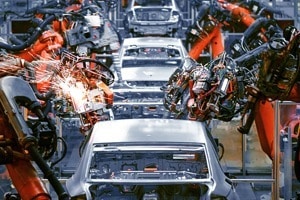What is just-in-sequence delivery (JiS)?
Procurement logistics is about managing the constantly changing dynamics on the market. The earlier and more far-reaching the measures are taken, the easier it is to exploit potential as early as the purchasing stage. Procurement logistics combines distribution and production, covering all activities that ensure the supply of all relevant goods to the company.
Just-in-sequence delivery is a further development of just-in-time, which enables much more specific goods handling.
proLogistik explains the basic features of the principle, highlights the beneficiaries of this method and deals with other aspects of this type of delivery.
Definition and explanation: just-in-sequence delivery
Classic just-in-time enables companies to receive the goods they need for further processing in exactly the right quantity at the right time. This reduces the cost of warehousing by shifting a large part of it to the road, rail or river. However, aspects such as the correct sequence do not play a role here; the supplier merely ensures that a continuous flow of goods is guaranteed in accordance with the “assembly line principle”.
Just-in-sequence delivery is different: this type of delivery develops just-in-time further, as goods are delivered exactly as they are needed in terms of quantity, type and time. They arrive at the right place in exactly the right form so that they can continue working there without delay.
Advantages of just-in-sequence delivery
Especially in highly competitive industries such as the automotive sector, it is important to use time and other resources wisely. To make matters worse, the range of products on offer is extremely diverse. One and the same module exists in countless shapes, colors and variants, which would require very complex warehousing.
Just-in-sequence delivery, on the other hand, is based on a continuous electronic data exchange between the supplier and customer. As transports are planned down to the last detail and, above all, timed, processes are optimized in the best possible way.
An overview of the main advantages of just-in-sequence delivery:
- Simplified production due to overall reduced complexity in operation
- Reduced inventory costs due to the elimination of storage capacity
- Demand-driven exchange of goods without building up stocks
- Enabling the production of individual products without additional costs
- Direct integration of the modules into production
- Optimized use of space in assembly
- Direct communication via Electronic Data Interchange (EDI)
In short, manufacturing companies are in a position to act much more specifically to meet the needs of the market. As the production cycle essentially determines the delivery, sources of error or unnecessary cost blocks can be effectively eliminated.
Challenges posed by just-in-sequence delivery
As can be seen from the explanations above, just-in-sequence delivery requires a high level of data exchange and communication. This not only affects sensitive areas of individual companies, but also requires established structures.
Aspects that are considered a disadvantage of just-in-sequence delivery:
- Greater dependence on internal and external technology
- Increased effort for smooth communication between all players
- If applicable, high costs due to incorrect deliveries
- Production downtime due to storms or similar that lead to delays along the supply chain
Important: Just-in-sequence delivery is used in particular where products are to be further processed. The synchronization of production processes creates flexibility, which, however, requires close integration.
